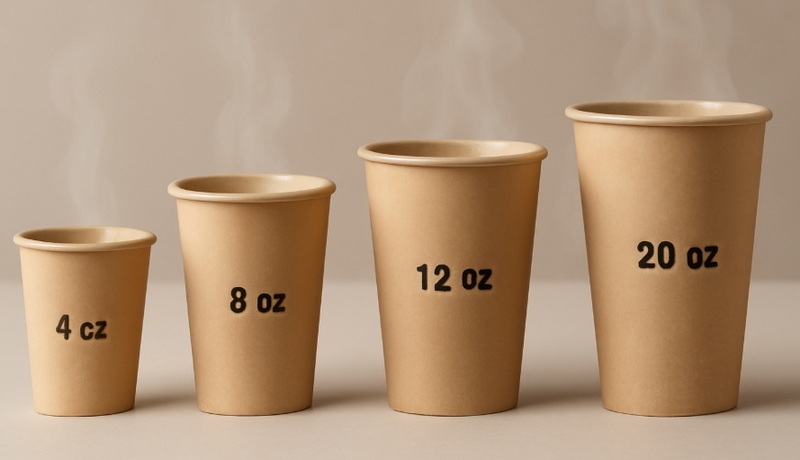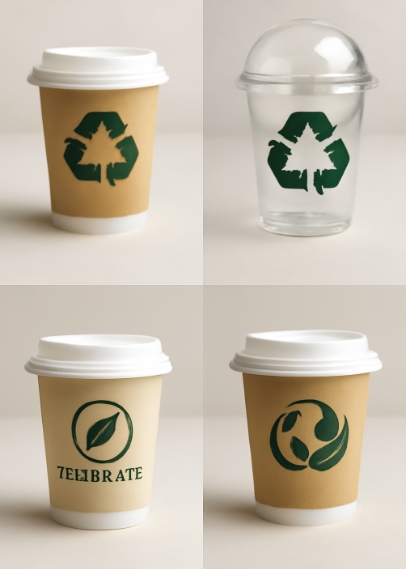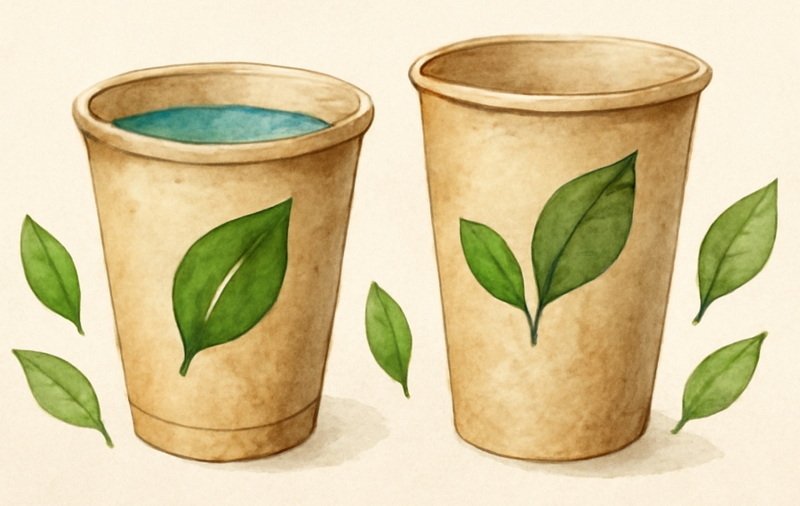
Content Menu
● Understanding Disposable Cups With Lids
● The Materials Used in Disposable Cups With Lids
>> Paper Cups
>> Plastic Cups and Lids
>> Bioplastics and Compostable Materials
● Why Recycling Disposable Cups With Lids Is Challenging
>> Mixed Material Construction
>> Variability in Local Recycling Programs
>> Contamination Issues
● How to Recycle Disposable Cups With Lids Properly
>> Step-by-Step Guide
● Compostable and Biodegradable Disposable Cups With Lids
● The Environmental Impact of Disposable Cups With Lids
● Innovations and Future Solutions for Disposable Cups With Lids
● Conclusion
● Frequently Asked Questions (FAQ)
>> 1. Can all disposable cups with lids be recycled?
>> 2. Should I remove the lid before recycling a disposable cup with lid?
>> 3. Are compostable cups with lids better for the environment?
>> 4. Why are black plastic lids not accepted in recycling programs?
>> 5. What is the best way to reduce waste from disposable cups with lids?
Disposable cups with lids have become an inseparable part of modern life. Whether you're grabbing your morning coffee, sipping a cold drink at a fast-food restaurant, or enjoying a beverage at a public event, chances are you're using a disposable cup with a lid. As society becomes more environmentally conscious, the question arises: can you recycle disposable cups with lids? The answer is not as simple as it seems. This comprehensive guide explores the materials, recycling challenges, best practices, alternatives, and environmental impacts associated with disposable cups with lids.

Understanding Disposable Cups With Lids
Disposable cups with lids are designed for single use and are prevalent in coffee shops, offices, airports, and fast-food outlets. They are valued for their convenience, portability, and ability to prevent spills. There are several types of disposable cups with lids:
- Paper cups with plastic lids: Common for hot beverages like coffee and tea.
- Plastic cups with plastic lids: Frequently used for cold drinks such as iced coffee, soda, and juice.
- Foam cups with lids: Used less frequently now due to environmental concerns, but still present in some locations.
Each type of disposable cup with lid presents unique recycling challenges, primarily due to the materials used and how they interact with existing recycling systems.
The Materials Used in Disposable Cups With Lids
Paper Cups
Most paper cups are not made from pure paper. Instead, they are lined with a thin layer of plastic, often polyethylene, to prevent leaks and maintain the cup's integrity when holding hot or cold liquids. This plastic lining, while essential for functionality, complicates recycling because it requires specialized processes to separate the plastic from the paper fibers.
Plastic Cups and Lids
Plastic cups and their lids are usually made from materials such as PET (polyethylene terephthalate), polypropylene, or polystyrene. PET is the most widely recycled plastic, but not all recycling facilities accept every type of plastic. Some lids, particularly black or colored ones, are made from polystyrene, which is less commonly recycled due to sorting and processing limitations.
Bioplastics and Compostable Materials
Some disposable cups with lids are marketed as compostable or biodegradable. These are typically made from plant-based plastics like PLA (polylactic acid). While they offer an alternative to conventional plastics, they require industrial composting facilities to break down properly and are not suitable for standard recycling or home composting.
Why Recycling Disposable Cups With Lids Is Challenging
Mixed Material Construction
The biggest obstacle to recycling disposable cups with lids is their mixed-material construction. Paper cups with plastic linings or bioplastic coatings are difficult to process in standard recycling streams because the materials must be separated before recycling can occur. Most curbside recycling programs are not equipped to handle this separation.
Variability in Local Recycling Programs
Recycling rules for disposable cups with lids vary significantly from one community to another. Some cities have upgraded their recycling facilities to accept poly-lined paper cups, while others do not. Similarly, some programs accept certain types of plastic lids, while others reject them entirely.
- Paper cups: Accepted in some recycling programs, especially where mills can process poly-lined cups.
- Plastic lids: May be accepted if made from PET or polypropylene, but black plastic lids are often rejected.
- Plastic cups: Clear plastic cups are more likely to be accepted than colored or opaque ones.
Contamination Issues
Contamination is a significant problem in recycling. Leftover liquids, food residue, and mixing non-recyclable items like straws or sleeves with recyclables can spoil entire batches of recyclable materials, making them unsuitable for processing.
How to Recycle Disposable Cups With Lids Properly
Step-by-Step Guide
1. Check Local Recycling Guidelines
Start by consulting your local recycling program's website or resources to see which types of disposable cups with lids are accepted.
2. Separate Components
- For paper cups with plastic lids: Remove the lid. Place the cup and lid in their respective bins if both are accepted. If not, dispose of the lid in the trash.
- For plastic cups with plastic lids: Rinse both items, reattach the lid if allowed, and place them in the recycling bin if accepted locally.
3. Clean and Dry
Make sure all cups and lids are empty, clean, and dry before recycling. Rinse out any remaining liquid or residue to avoid contamination.
4. Avoid Contaminants
Discard straws, stirrers, and sleeves unless your recycling program specifically accepts them.
5. Do Not Stack or Nest
Place items loosely in the recycling bin to help sorting machines process them efficiently.

Compostable and Biodegradable Disposable Cups With Lids
Compostable and biodegradable disposable cups with lids are gaining popularity as an eco-friendly alternative. However, they come with their own set of challenges:
- Industrial Composting Required: Most compostable cups and lids need the high heat of industrial composting facilities to break down properly. These facilities are not available in all communities.
- Not Suitable for Home Composting: Home compost bins typically do not reach the necessary temperatures to decompose bioplastics or lined paper cups.
- Certification Matters: Look for third-party certifications to ensure that compostability claims are legitimate and not just marketing.
If compostable disposable cups with lids end up in landfills or regular recycling streams, they may not break down as intended and could contribute to pollution.
The Environmental Impact of Disposable Cups With Lids
The widespread use of disposable cups with lids has significant environmental consequences:
- Landfill Accumulation: Billions of disposable cups with lids are used every year, with only a small fraction being recycled or composted.
- Plastic Pollution: Lids and plastic linings can break down into microplastics, contaminating soil and waterways and harming wildlife.
- Resource Consumption: The production of disposable cups with lids consumes energy, water, and raw materials, contributing to greenhouse gas emissions and resource depletion.
Even cups made with bioplastic linings can release harmful chemicals over time, impacting both wildlife and ecosystems.
Innovations and Future Solutions for Disposable Cups With Lids
Efforts to make disposable cups with lids more sustainable are ongoing:
- Advanced Recycling Technologies: New facilities and technologies are being developed to separate plastic linings from paper cups, making recycling more feasible.
- Design Improvements: Some manufacturers are creating cups made from a single material or with easily separable components to enhance recyclability.
- Reusable Alternatives: The most effective way to reduce waste is to use reusable cups and lids. Many coffee shops now offer discounts to customers who bring their own reusable cups.
Conclusion
Recycling disposable cups with lids is possible, but the process is complicated by mixed materials, contamination, and inconsistent local recycling capabilities. While some communities are making progress in accepting more types of disposable cups with lids, significant challenges remain. The best way to minimize environmental impact is to reduce reliance on disposables by choosing reusable options whenever possible and following local recycling guidelines carefully.

Frequently Asked Questions (FAQ)
1. Can all disposable cups with lids be recycled?
Not all disposable cups with lids are recyclable. Their recyclability depends on the materials used, the type of lining, and local recycling policies. Always check your local guidelines before recycling.
2. Should I remove the lid before recycling a disposable cup with lid?
Yes, in most cases you should remove the lid. For paper cups, the lid is often a different material and should be disposed of separately. For plastic cups, some programs allow lids to be reattached and recycled together. Always check local rules.
3. Are compostable cups with lids better for the environment?
Compostable cups with lids can reduce landfill waste if processed in industrial composting facilities. However, if they end up in landfills or regular recycling streams, they may not break down as intended and could still contribute to pollution.
4. Why are black plastic lids not accepted in recycling programs?
Black plastic lids are difficult for sorting machines to detect, so they often end up in landfills even if technically recyclable. It's best to avoid black lids or dispose of them in the trash if your local program does not accept them.
5. What is the best way to reduce waste from disposable cups with lids?
The most effective way is to use reusable cups and lids. Many coffee shops offer discounts for bringing your own cup. If disposables are necessary, follow local recycling guidelines, clean items before recycling, and avoid unnecessary accessories like straws and sleeves.

















